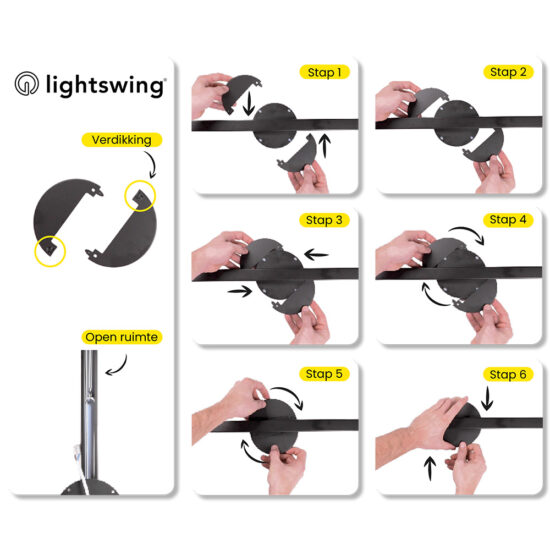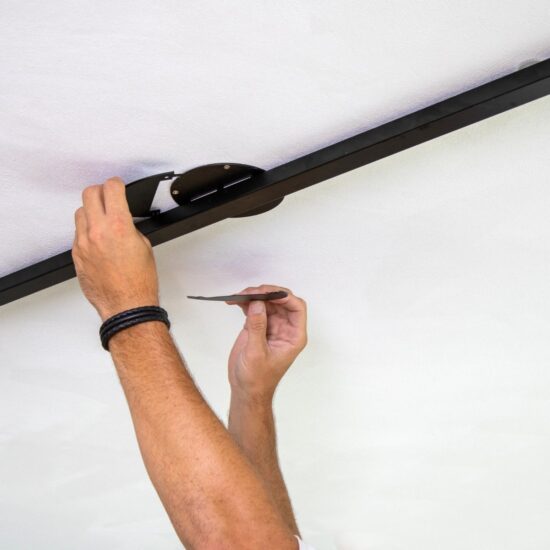Enjoy your Lightswing® right away
So you have time to think about it
We'll prepare your order the same day
Enjoy your Lightswing® right away
So you have time to think about it
We'll prepare your order the same day
Hang a pendant light in seconds. This is possible with the Lightswing® on your ceiling. Huh? Yes, really! You’ll never be messing around in the air hanging a lamp again. And that saves time and annoying situations.
After the Lightswing® hangs, attach the lamp to the Quick Release. This Quick Release is an intermediate piece that you can easily click into the Lightswing®. And as the name ‘Quick’ says, attaching your lamp to the Lightswing® is nice and fast. Handy, right?
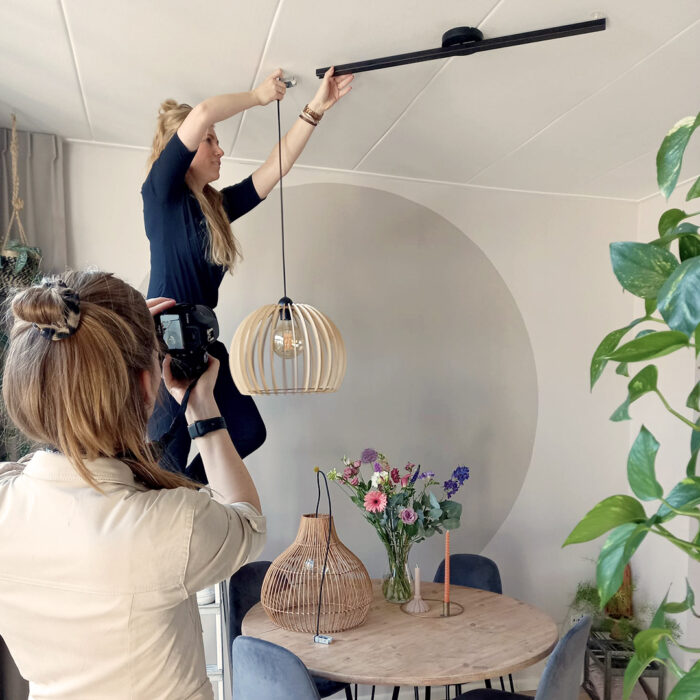
First things first. To be able to hang a lamp without difficulty, it is useful to attach a Lightswing® to your ceiling. Then you can use this hanging system for pendant lights – with one click! – hang a new lamp. Curious how that works exactly? Read on!
You can ‘mount’ your lamp to the Quick Release while sitting at the kitchen table. That saves fumbling on the stairs with your hands full of tools. In the step-by-step plan below you can read how attaching the lamp to the Quick Release works:
Watch the video ‘attaching a lamp cord to the Lightswing®‘ to see what the above steps look like.
Have you attached the lamp cord to the Quick Release? Beautiful! Then it’s time to hang your lamp on the Lightswing®. This time with a lamp, go up the stairs. Hassle with wires and screwdrivers is no longer an issue. You slide the Quick Release into the end of the Lightswing® and voilà: your lamp hangs!
Do you want to temporarily remove the lamp because it hangs in the way? That too is quickly done! Disconnect the Quick Release from the Lightswing® and store your lamp. Shop your Lightswing® now!
During the assembly of the Lightswing® you must make a choice whether you use the mounting ring or not. Curious when you use or do not use the mounting ring when mounting the Lightswing®? We explain it to you in this blog.

Mounting location of the Lightswing®
Whether or not you should use the mounting ring depends, among other things, on the place where you want to attach the Lightswing®.
Lightswing® over a central box
If you want to attach the Lightswing® to the place where the current central box is located, you do not need the mounting ring. The Lightswing® can be mounted tightly to the ceiling. The electricity cables and crown stones can easily be hidden in the central box.
Lightswing® over a cable from the ceiling
Do you not want to mount the Lightswing® suspension system over a central box, but on a separate electricity cable from your ceiling? Then you do need the mounting ring. The mounting ring is needed so that you can cleverly hide the cable from the ceiling. There is enough space for this in the mounting ring. You then screw the Lightswing® against the mounting ring.
Lightswing® anywhere
Do you mount the Lightswing® anywhere on your ceiling where there is no light connection yet? Even then, the mounting ring is needed. In the mounting ring there is a small recess that you can push out of the mounting ring. For example, you can pass an electrical wire through the mounting ring. Then connect the Lightswing® to the electricity cable and screw the suspension system to the mounting ring.
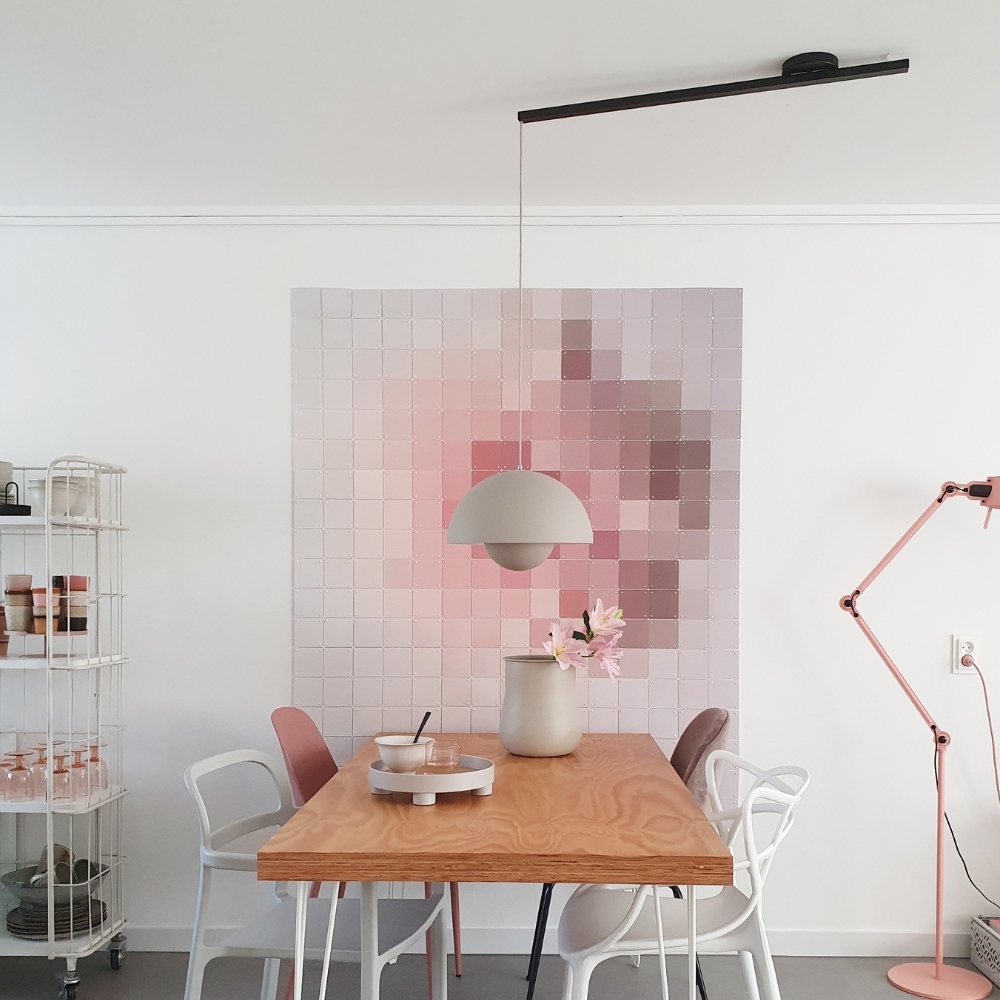
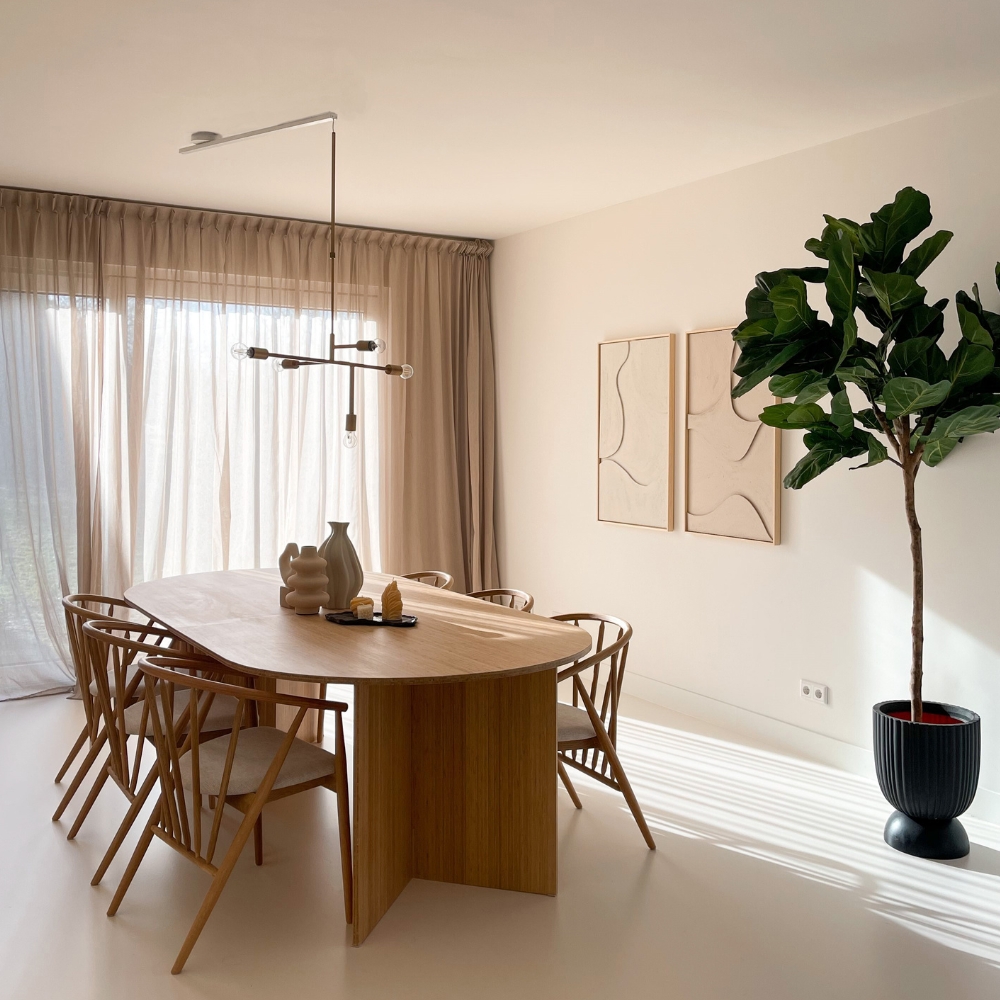
In addition to the mounting spot, it is also important to check whether your ceiling is straight and whether the finish of your ceiling lends itself to a Lightswing® without or with a mounting ring.
Straight ceiling
When you attach the Lightswing® to your ceiling without the mounting ring in between, the Lightswing® is tightly mounted against the ceiling. Does your ceiling slope a little bit or is your ceiling not completely straight here and there? This can cause the Lightswing® to not slide optimally. When you place the mounting ring between the ceiling and the Lightswing®, there is 2 cm between the Lightswing® and the ceiling. For example, it is not a problem if the ceiling is slightly uneven where the suspension system will hang.
Ceiling finish
Often ceilings are nice and sleek and evenly finished. With such a sleek finish, it is often not necessary to use the mounting ring. Depending on where you attach the Lightswing® of course. Do you have a packed ceiling at home? Then it can be nice to mount the Lightswing® with a mounting ring. This way you can be sure that the Lightswing® does not rub along your ceiling.
Whether or not to use the mounting ring depends on where you attach the Lightswing® and on the ceiling to which the system is attached. Would you like to know more about the Lightswing® mounting? Check out our assembly page.
Have you bought a new dining table pendant light and are you curious how high a pendant light should hang above the dining table? There is a rule of thumb for this, but the height of your dining table pendant light also depends on the type of pendant lamp and the size of the pendant lamp. We’ll tell you everything you need to know in this blog.
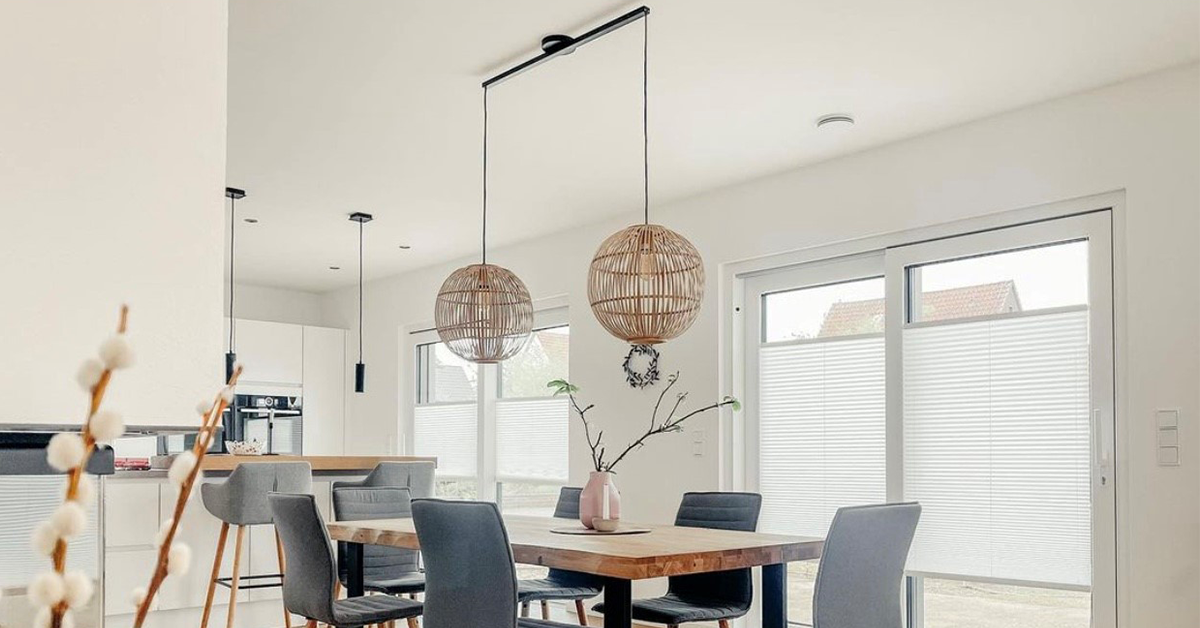
The height of the lamp is the most important thing to consider when hanging a pendant light above the dining table. The rule of thumb for a lamp above the table is 75 cm. The distance between the tabletop and the bottom of the lamp is 75 cm. However, this is not always the ideal height. Because what if the pendant lamp only illuminates a small part of the table? Or does the lamp not give good light at all, so you do not see what is on your plate in the evening?
First, make a conscious choice between an open or a closed lampshade. A pendant light above the table with an open lampshade provides atmospheric lighting throughout the room. That is ideal when you have a large kitchen. When you choose a closed lampshade, you can centre the light much better in one place. The light then shines on the kitchen table and less to the rest of the room. In this case, hang your lamp a little higher, so that you can illuminate a larger part of the table with the same lamp.
You can choose a pendant light in varied sizes, colours and shapes. How high you hang a pendant light above the dining table also depends on the size of the pendant light. Smaller pendant lights can often be hung a little lower above the table. That is, about 55 cm above the table. With larger lamps, it is wise to stick to the rule of thumb of 75 cm. Are you hanging multiple lamps above the dining table? Make sure the distance between the lamps is at least 80 cm.
Do you simply want to hang two pendant lights above the dining table? With the help of the Lightswing® suspension system you can easily hang two lamps above the table. Curious? Discover the Lightswing® now.
Curious which Lightswing® is suitable for your situation? In this blog we tell you which choices you must make so that you get the right Lightswing®!
With the Lightswing® you can hang both one and two lamps. If you choose one pendant light, the Lightswing® Single is a good option. Do you want two lamps above the table or the kitchen worktop? Then the Lightswing® Twin is the best choice. Still in doubt? You can use the Lightswing® Twin with both one and two lamps. This way you can easily switch between one or two lamps.
Lightswing® Single: suitable for one pendant lampLightswing®
Twin: suitable for one or two pendant lights
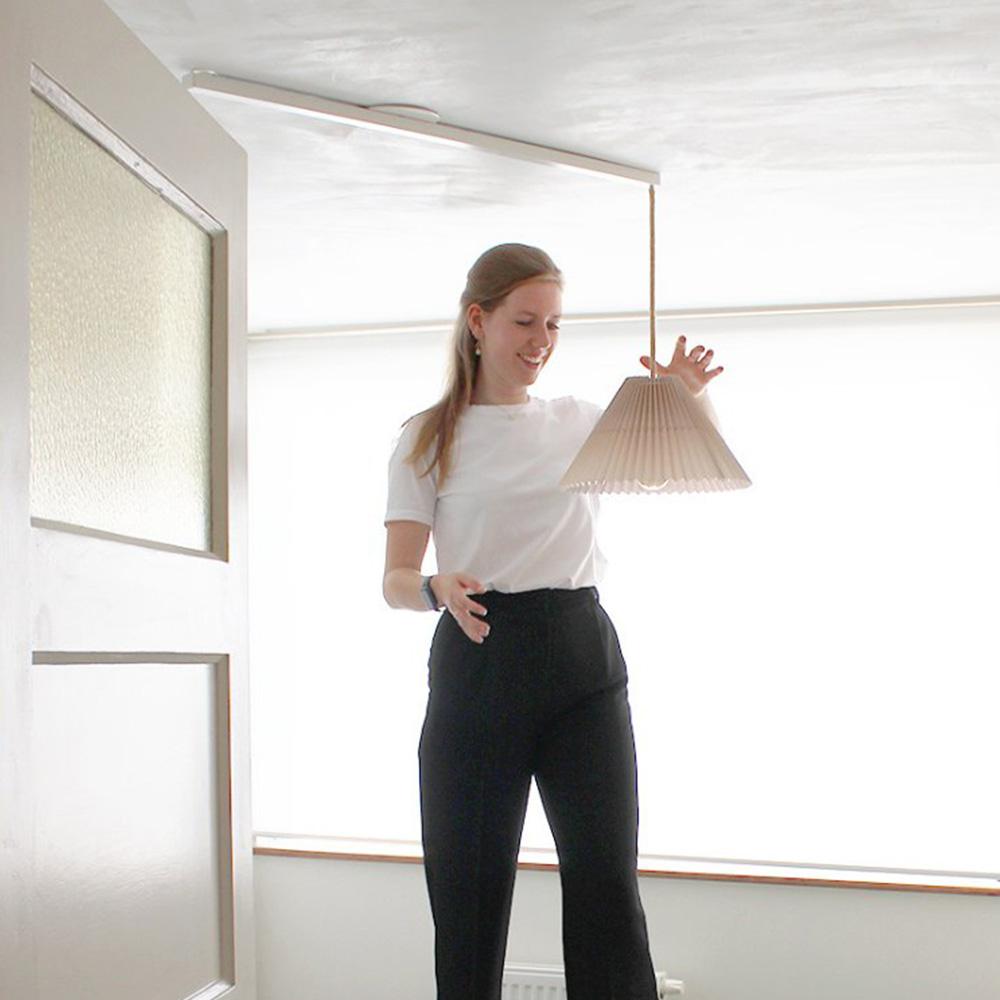
Do you want to move a lamp? With the Lightswing® you can easily slide a lamp to another place. Each Lightswing® in our collection has its own sliding range. So measure well in advance how far you want to be able to slide the pendant lights from the connection point. We have listed the sliding range per Lightswing® for you below.
You can attach a pendant light to both ends of the Lightswing® Twin. The distance between the pendant lights therefore depends on the Lightswing® length you choose. With the Lightswing® Twin 90cm, the lamps hang 90 cm apart. With the Lightswing® Twin 110 cm, the lamps hang 110 cm apart. How far the lamps should hang from each other depends of course on the size of the dining table or kitchen worktop.
When choosing the right Lightswing® colour, it is important that the colour of the Lightswing® fits well with the colour of the ceiling or with the colour of your pendant lights. We have listed the available colours of the Lightswing® below. Curious about which colour suits your interior type? Read it in the blog about the Lightswing® colours.
So, first, decide how many lights you want to hang on the Lightswing®. Then choose the right length. And finally, decide which colour you want. Easy, right?

Ready to hang the Lightswing® at your home? Make sure you are well prepared and have the right tools at hand. We have listed everything you need below.
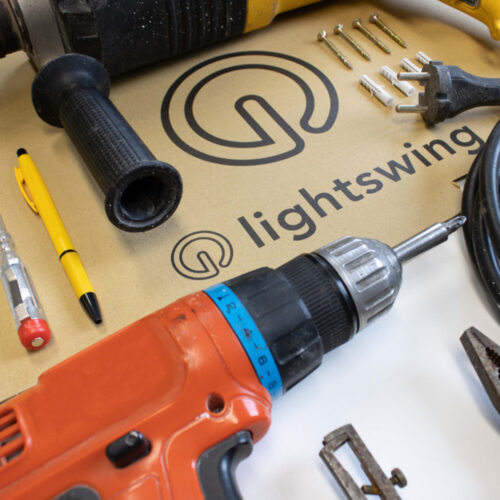
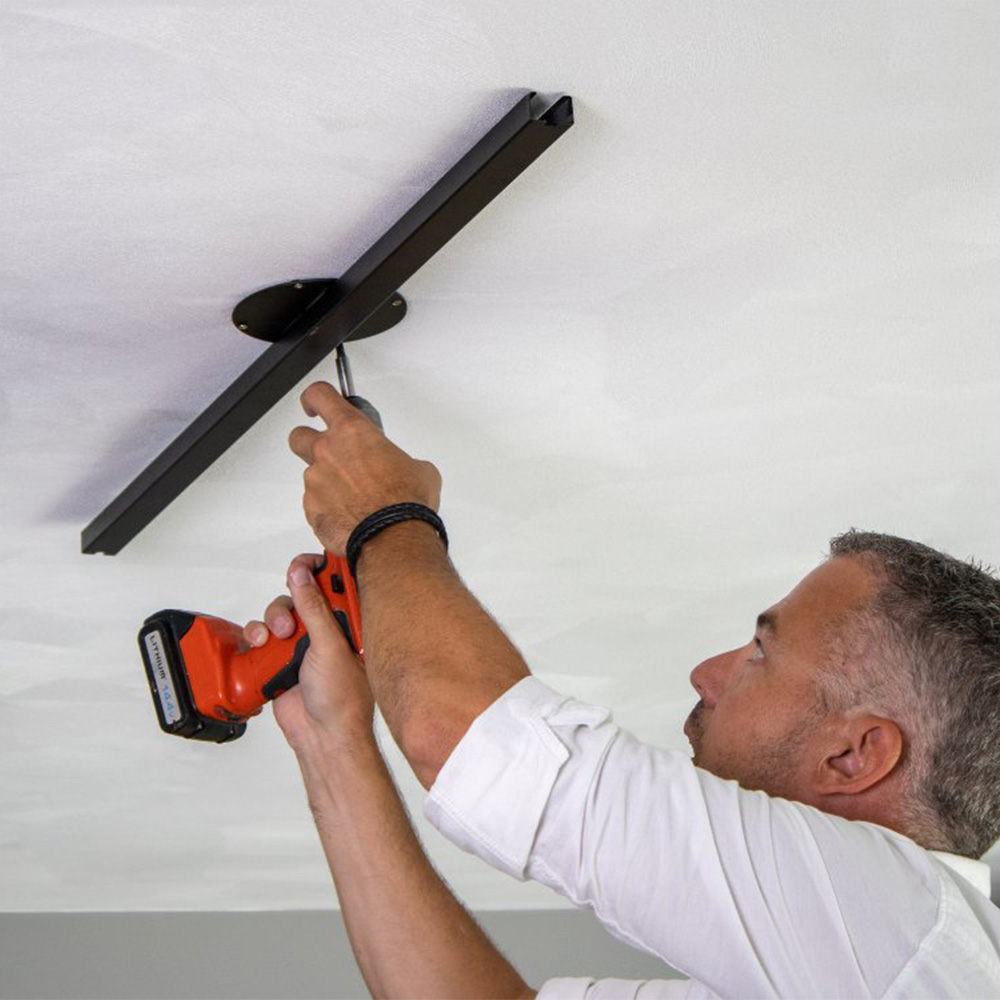
To attach the Lightswing® to your ceiling, it is useful when you already have the following tools ready:
The range of screws and plugs is enormous. When buying screws and plugs to mount the Lightswing® you should pay attention to a few things. The right choice depends first of all on your ceiling type. For a plaster ceiling you need different plugs than for a concrete ceiling so, match the right plugs well to your ceiling type.
Suitable screws for the Lightswing® must meet two things: the screw head must be flat with a maximum head width of 7 mm. In addition, it is important to match the screws to the plugs you use. Take a good look at the thickness and length of the screw.
Is half the battle! Have you gone through the manual, collected the right tools and bought screws and plugs? That’s great! You’re ready to attach the Lightswing® to your ceiling!
Do you want to choose a suitable pendant light for the Lightswing®? In this blog we tell you which 3 things you should check, so that your chosen pendant light is suitable for the Lightswing®.
Lightswing® Single 90 cm: max. 3.5 kg per pendant lamp
Lightswing® Twin 90 cm: max. 3.5 kg per pendant lamp
Lightswing® Single 110 cm: max. 2.5 kg per pendant lamp
Lightswing® Twin 110 cm: max. 2.5 kg per pendant lamp
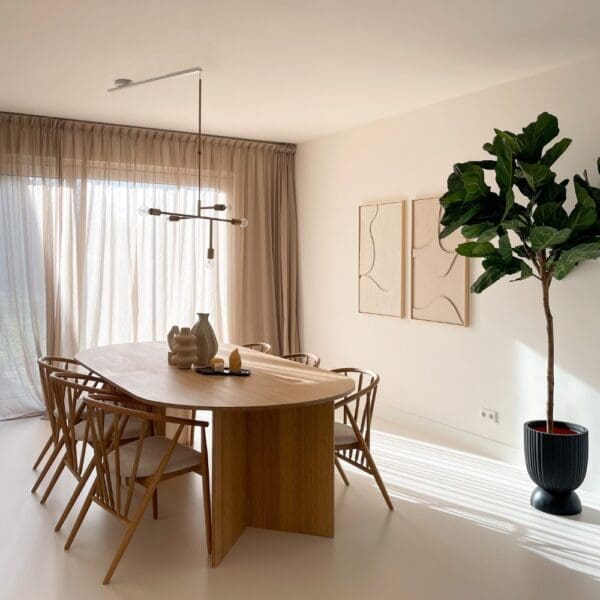
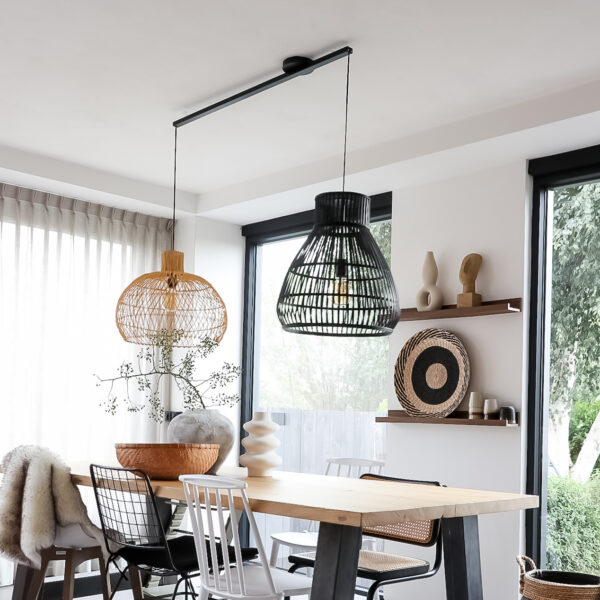
The first step is to check the weight of the pendant light. The maximum weight you can hang on the Lightswing® depends on the length of the Lightswing®. The maximum carrying weight of the Lightswing® 110 cm is lower than the maximum carrying weight of the Lightswing® 90 cm. This is because the distance between the attachment point and the point where the pendant lamp is larger at the 110 cm.
We have the max. carrying weight per Lightswing® listed for you:
If you want to attach a lamp to the Lightswing®, it is important that this lamp only has one cord where the power wires run trough. To attach your lamp cord to the Lightswing®, you need to cut the cord a bit and attach the wires to the Quick Release. Does the lamp have an extra (decorative) cable or chain in addition to one cord? You can also attach it to the Lightswing®. Check out how to do that here!
In some cases, a pendant light has a built-in dimmer or transformer. This is often attached in the ceiling cap of the pendant light. In the Lightswing® there is no space to attach the ceiling cap and the dimmer. It is therefore not possible to attach a pendant lamp with a built-in dimmer or transformer to the Lightswing®. The Lightswing® can be used with a wall dimmer!
As you can see, the three steps are practical choices you must make. This way you know what a suitable pendant light for the Lightswing® must meet. It is up to you to choose a beautiful pendant light that fits perfectly with your interior. And at the Lightswing® of course! Order your Lightswing® here.
Are you wondering whether the ceiling in your house is suitable for the Lightswing®? In this blog we tell you per ceiling type whether or not it is suitable for attaching the Lightswing®.
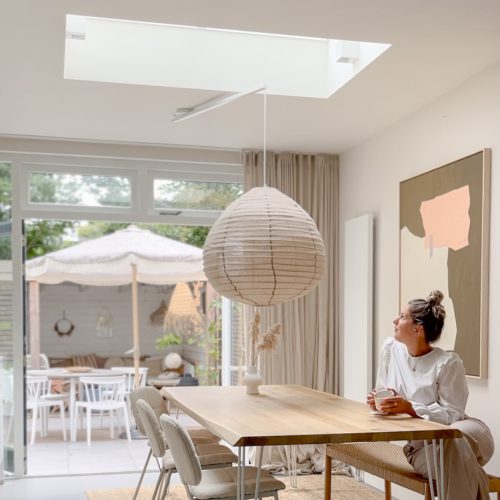

A thatched ceiling
Is there wood or plaster above the reeds? Make sure you screw the Lightswing® into the wood / plaster with the right plugs and screws. Does your thatched ceiling have no extra support (wood or plaster) under the reeds? Then it is unfortunately not possible to attach the Lightswing® to a thatched ceiling. Reed is not sturdy enough to carry the Lightswing® with the pendant lamp.
A concrete ceiling
A concrete ceiling is certainly suitable for attaching the Lightswing®. You cannot fully attach the Lightswing® to the central box, so keep in mind that you have to drill 4 holes in your concrete ceiling to be able to attach the system properly. For this we supply a handy drilling template in the Lightswing® package. So nothing can go wrong!
A wood or plaster ceiling
A wooden ceiling or a plaster ceiling is also suitable for the Lightswing®. If you have a plaster ceiling with no further support underneath (wood, for example), it is extra important to use the right plugs and screws. Make sure that the plugs go all the way through the plaster. So, the plug expands not only in the plaster, but also at the top of the drywall.
A sloping ceiling
It is possible to attach the Lightswing® to a slightly sloping ceiling. For this it is best to use a Lightswing® Twin. The Twin has an adjustable foot at both ends of the Lightswing®, so you can set the Lightswing® to the ceiling on both sides. Note: make sure that your pendant light does not hang at the lowest point. The Quick Release to which the lamp is attached is not locked in the Lightswing®. If the lamp is too heavy or the slope is too slanted, the Quick Release can come loose.
A ceiling with an ornament
It is possible to attach the Lightswing® to an ornament. With the help of the Lightswing® you can easily move the pendant lamp to the right place without loose cables hanging from the ornament. Use the mounting ring for this. This allows the Lightswing® to rotate and slide freely, without damaging the ornament.
A beamed ceiling
Do you have a beamed ceiling and do you want to attach a Lightswing®? Then there are a number of things you can consider. First of all, it is easiest when you mount the Lightswing® on the beams and not ‘between’ the beams. This gives the Lightswing® plenty of room to slide and rotate. Do you want to place the Lightswing® between the beams? Keep in mind that the Lightswing® does not have complete freedom to slide and rotate.
A skylight ceiling.
With the Lightswing® you can easily place your pendant lamp under the skylight. Connect the Lightswing® over the current light point next to the skylight. Because the system is only fixed at one point and can move freely, even if there is no ceiling above, you can easily place your pendant lamp under the skylight.
The Lightswing® is therefore suitable for almost all ceiling types. Have you already made a choice which Lightswing® you would choose? Check out the Lightswing® Single for one pendant light. Or check out the Lightswing® Twin so you can attach two pendant lights to your ceiling!
The last step of the Lightswing® assembly is to place the covers. The covers of the Lightswing ensure the best finishing touch, because they cover the screws with which the Lightswing® is attached to the ceiling. In this blog we tell you step by step how you can attach the cover plates to the Lightswing®.
1. Bring the cover plates into position. Remove the covers from each other and bring the two caps each to one side of the Lightswing®.
2. Place cover plates between the ceiling and Lightswing®. Place the two covers with the thickening between the ceiling and the Lightswing®, so that the thickening of the caps falls into the open space of the Lightswing®.
3. Slide the cover plates towards the base plate. Because the thickening of the cover plates ‘falls’ into the Lightswing®, you have enough space to slide the caps towards the base plate of the Lightswing®.
4. Make a rotating motion. When the cover plates almost slide over the base plate, you make a rotating movement. Note that the thickening is still in the gap of the Lightswing®
5. Slide and rotate. Slide and turn the cover plates further inwards, over the base plate. Do this until the covers are facing each other.
6. Press the cover plates together. The last step is clicking the two cover plates together. To do this, press the caps together until they click.
When placing the covers, it is important that the Lightswing® hangs nicely straight along the ceiling. This way you have enough space to slide the covers between the Lightswing® and the ceiling. Adjusting the Lightswing® is done with the help of the levelling foot.
Then you check whether the screws with which the Lightswing® is attached are deep enough in their holes. Do the screws stick out? Then the cover plates can be damage when turning the Lightswing®. In that case, screw the screws further into their holes or choose other screws with a smaller head size.
